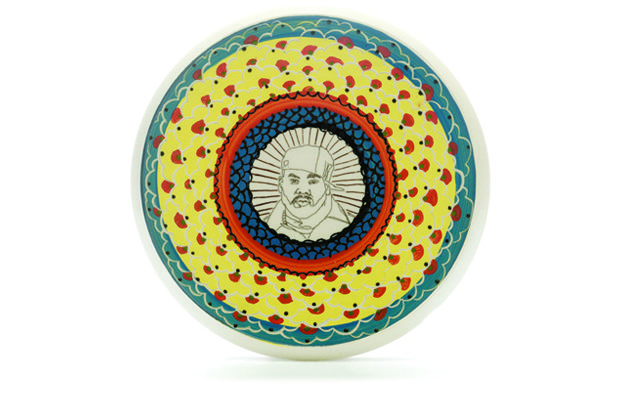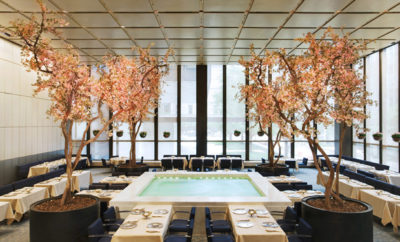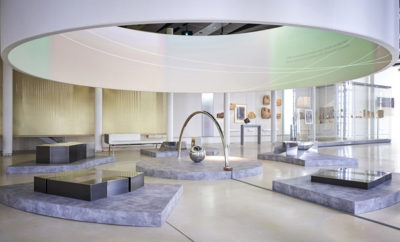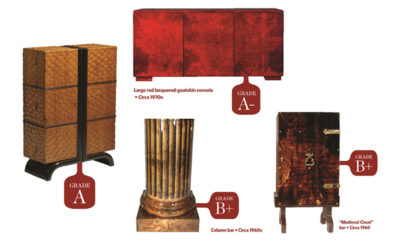 Roberto Lugo’s Portrait Plate: Raekwon, 2015, depicts a member of the hip-hop group Wu-Tang Clan. Courtesy of Wexler Gallery.
Roberto Lugo’s Portrait Plate: Raekwon, 2015, depicts a member of the hip-hop group Wu-Tang Clan. Courtesy of Wexler Gallery.
Feature
SPRING 2016: FROM THE EDITOR
What’s New, What’s Next, What’s Not
CLOSE YOUR EYES AND THINK OF THE WORD MODERN. Chances are you’ll immediately conjure up an image of Philip Johnson’s Glass House, or Mies van der Rohe’s Seagram Building. Or perhaps you’ll see, in your mind’s eye, a chair by Verner Panton or Charles and Ray Eames, or a Tulip table by Eero Saarinen. They’re emblems. And all of them have come to signify modern, to mean modern. But that does not begin to tell the story of modernism, of modernity, of being modern.
What one might think of as the moment of modernism—the arrival of the Bauhaus, the sea change just before World War II, and the emergence of a powerful new aesthetic in the postwar era—is the backbone of the story of design in the twentieth century, but it is not the whole story. And as one century segued into the next, design began to change. It began to reflect a larger whole—one that crosses boundaries and cultures, that combines age-old craft with new technology. In MODERN, we are endeavoring to show work that has deep roots and embraces past, present, and future.
Thus on these pages we go back to the roots of modernism with our story by Jacob Brillhart on the drawing trips taken by Le Corbusier between 1907 and 1911. The drawings are well-set in the Beaux-Arts tradition; they are graceful, detailed, carefully proportioned, and made with an elegant hand. They are important to know, as this is the wellspring of modernism. We also fast-forward into the future, showing work that is handsome, work that is edgy—and some of it (I am thinking of the ceramics by Roberto Lugo who is profiled here) is both. As Nicole Anderson’s look at three Brooklyn-based designers demonstrates, our cultural definition of what is modern has stretched. There is a compelling power to design that is pure and minimal, but there is a fascination that is just as potent with design that invokes memory and history, design that digs into our cultural roots.
Not long ago, I interviewed the versatile Dutch designer Marcel Wanders. As we got to the end of the formal interview, the conversation veered off into far more philosophical territory. We talked about the iterative qualities of modernism, and he spoke of his regret that the dogma of modernism holds that the past is irrelevant to the future. He asked, more or less rhetorically, what that means for things that are being made today. Are they obsolete before they’re finished?
Certainly in his work, Wanders embraces Dutch history, and though it is inevitably of a moment, one might just pause sometimes and ask what moment? That would make Wanders (or really many designers) happy, to know that they have achieved a kind of modern timelessness rather than instant obsolescence.
I am just taking a small leap here from the art of making an object to the craft of making a magazine. Chances are if you are reading this, you still cherish the idea of print on paper. Like all that we write about, MODERN is a tangible object that I hope is worth lingering over and looking back on. But we’re not Luddites here (and indeed I look forward to a near future when we will connect more with our readers through our digital offerings), but I also want to hold onto that strong thread that connects us to what came before, to a time when work was done by hand (whether it was a building or a teapot), and to a time when technology lets us more fully appreciate that fact. To me, that’s modern.












